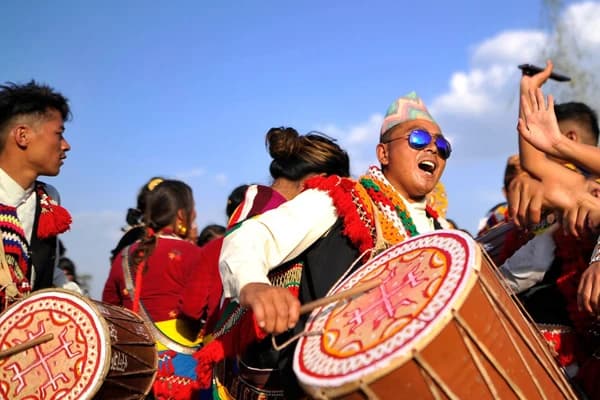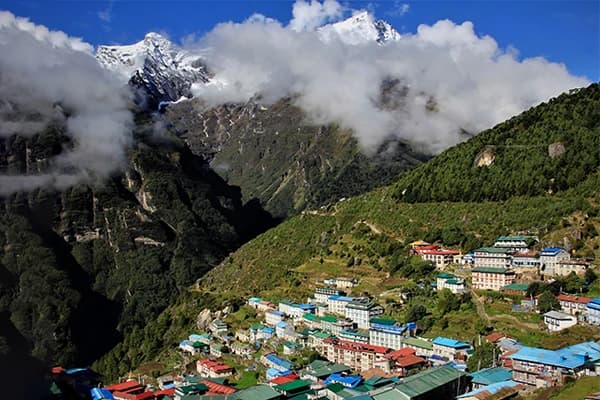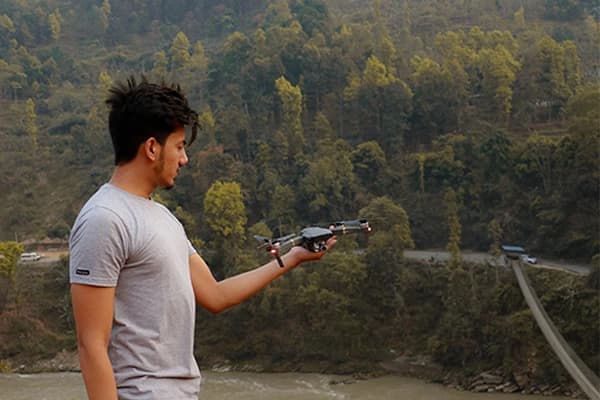Historical, spiritual and cultural importance
Changunarayan Temple has a rich history linking to the 4th century AD during the Lichhavi dynasty. It is mentioned in King Manadeva's 464 CE inscription written in Sanskrit and carved in Gupta script during the king’s regime.
Changunarayan features the pagoda-style architecture of ancient times with intricate wood, stone, and metal carvings. There are the shrines of the deities like Shiva, Chinnamasta (Kali), Ganesh, and Krishna too.
The temple has survived numerous historical events like earthquakes, dynastic changes, and fires. It was rebuilt in 1702 AD after a major fire.
It is dedicated to Lord Vishnu in his incarnation as Narayan. The temple is adorned with the depictions of his ten incarnations. Traditional pujas, Hindu rituals, and festivals are celebrated within the temple premises.
During festivals like Bisket Jatra, the temple becomes a cultural hub. Nepali people celebrate the festival with traditional rituals and community in the temple complex and surroundings.
Architectural marvels of changunarayan temple
Changunarayan Temple is a perfect example of the top level of ancient Nepali craftsmanship. The architecture shows the perfect blend of Licchavi and Newari styles.
The temple complex is designed as a three-dimensional mandala. In the center, there is an image of Narayan placed at the heart of the square shrine. You can see the structure standing on a raised plinth. It is topped with a parasol finial.
The central part of the temple complex features the two-story pagoda-style structure crowned with a golden pinnacle accompanied by the four smaller pagodas at each corner.
In the temple, there are intricately carved brackets and struts that support the roofs. These are a perfect example of the rich ornamental woodwork. These carvings depict gods, goddesses, mythical creatures, and scenes from Hindu mythology.
The wooden supports have depictions of Vishnu and other deities in the form of detailed figures divided into the sections. However, like other temples, Changu Narayan does not feature the erotic carvings.
The doors and windows are also richly decorated with carvings of Naga (snakes) and other symbolic motifs like Chakra, Sankha, Kamal, and Khadga on stone pillars.
Outside the temple, there are stone sculptures of lions, griffins, elephants, and mythical creatures such as sarabhas. These sculptures are depicted as the guards of the temple from the four directions.
Inside the temple, you can see the numerous ancient sculptures of Lord Vishnu in various incarnations from the 6th and 7th centuries. The incarnations of the god in sculptures include Vishnu Vikrant, Narasimha, Vaikuntha Vishnu, and Vishwarup.
Inscriptions and Artifacts
The Changunarayan Temple is home to several inscriptions and artifacts. It features the oldest pillar inscription in Nepal. It was erected by King Manadeva. In the inscription, there is the story of King Manadeva persuading his mother not to commit ritual suicide after his father's death.
The pillar is at the main western entrance gate. It is topped with the stone carvings of Vishnu's divine possessions: Chakra (discus), Sankha (conch), Kamal (lotus), and Khadga (sword).
The temple premises feature numerous stone sculptures and bas-reliefs too. It represents the various forms and incarnations of Lord Vishnu and other Hindu deities.
Some of the notable sculptures are Chanda Narayan (Garuda Narayan), Sridhar Vishnu, Vaikuntha Vishnu, Vishworup, Vishnu Vikrant (Trivikram Vishnu), and Narasimha.
There are also smaller shrines dedicated to other deities like Lord Shiva (Kileshwor), Goddess Chhinnamasta, Ashta Matrika, and Krishna.
Visiting Changu Narayan Temple
The temple is open from 6 AM to 7 PM daily. The entry fee is NPR 350 for foreigners, NPR 150 for SAARC nationals, and free for Nepalese citizens.
To reach the temple, you can take the bus to Bhaktapur from Ratna Park in Kathmandu. From Bhaktapur Mini Bus Park, you can take another bus going straight to the Changu Narayan village.
You can also take the taxi from Kathmandu to Changu Narayan. It may cost extra but is more comfortable. Or you can also use the ride-hailing services like Pathao, inDrive, or Tootle to reach there.
You can visit the temple all year round. The precaution should be followed during visiting the temple in monsoon because of frequent rains. Otherwise, you can visit it during the spring, winter, and autumn seasons.
Spring and autumn offer pleasant weather and clear skies, while the winter offers a cold days. Early mornings are considered the best time of the day if you want to avoid the crowds.
If you want to experience the festive atmosphere, you also can visit during the Harishayani Ekadashi (falls on June-July) and Haribodhini Ekadashi (falls on October-November) festivals. This festive atmosphere offers the opportunity to witness the Nepalese Hindu devotion at its peak and also the cultural immersion.
Tips for the tourists visiting the temple
- Dress modestly; you should wear clothes that cover the shoulders and knees.
- Remove the shoes and leather accessories before entering the temple premises.
- Visit the temple early in the morning to avoid the crowds.
- Explore the smaller shrines, historical pillars like the Garuda pillar, and the nearby Changu Museum, which houses ancient artifacts too.
- Combine your itinerary with Nagarkot to Changu Narayan to witness the panoramic views of the Kathmandu Valley and the Himalayas.
- Carry Nepali currency in cash, as cards may not be accepted in the local shops and eateries near the temple.
- Respect the local customs and traditions.
- Engage with locals to learn about the historical and cultural part of the temple.
- Hire a knowledgeable guide to know about the temple in detail.
A Living Testament to Nepal's Rich Heritage
Changunarayan Temple is a living monument to Nepal's ancient history and cultural richness. It has centuries of religious devotion, artistic mastery, and historical continuity. The temple is dedicated to the lord Vishnu and showcases the pagoda-style architecture.
The temple has seen so many events, like the destructive fire in 1702 and the 2015 Gorkha Earthquake. Even after these devastating events, it still stands as the invaluable treasure of the nation’s cultural identity.
Step into Nepal’s past. Visit Changunarayan with our heritage experts and guided day tours.





